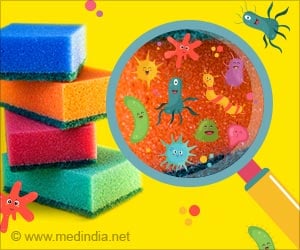Discover the hidden health hazards of vegetable chopping boards. Learn how to maintain a safe and hygienic kitchen environment.
- Vegetable chopping boards can harbor harmful bacteria that lead to foodborne illnesses
- Regular cleaning and proper maintenance of chopping boards are essential to prevent contamination
- Using separate chopping boards for different food groups can help minimize the risk of cross-contamination
Risks that Vegetable Chopping Boards Can Pose
Vegetable chopping boards, particularly those made of porous materials like wood or plastic, can harbor harmful bacteria and contaminate the food being prepared. Bacteria such as Salmonella, E. coli, and Listeria can thrive on the surface of the board and transfer onto the vegetables, increasing the risk of foodborne illnesses. It is crucial to be aware of these risks and take necessary precautions to ensure food safety.Cross-Contamination Dangers Due to Vegetable Chopping Boards
One of the primary concerns with vegetable chopping boards is the potential for cross-contamination. If the same board is used for cutting raw meats, poultry, or seafood, the bacteria present on these items can transfer to the vegetables, even if they are washed later. This can lead to severe food poisoning and infections. It is important to maintain separate chopping boards for different food groups to minimize the risk of cross-contamination (1✔ ✔Trusted SourceInsights into the Microbiological Safety of Wooden Cutting Boards Used for Meat Processing in Hong Kong's Wet Markets: A Focus on Food-Contact Surfaces, Cross-Contamination and the Efficacy of Traditional Hygiene Practices
Go to source).
Proper Cleaning and Maintenance of Vegetable Chopping Board
To mitigate the health hazards associated with vegetable chopping boards, proper cleaning and maintenance are crucial. Here are some essential steps to follow (2✔ ✔Trusted SourceDecontamination of Plastic and Wooden Cutting Boards for Kitchen Use
Go to source):
Regular Washing:
After each use, wash the chopping board with hot, soapy water. Use a scrub brush to remove any food particles or residue. Thoroughly rinse it under running water.Disinfection:
To further eliminate bacteria, disinfect the chopping board by using a diluted bleach solution or a food-safe disinfectant. Follow the manufacturer's instructions and rinse well afterwards.Drying:
Allow the chopping board to air dry completely before storing it. Moisture can promote the growth of bacteria, so ensuring it is thoroughly dried is essential.
Choosing the Right Chopping Board
The material of the chopping board can also impact its safety and durability. Consider the following options:Plastic:
Plastic chopping boards are non-porous and generally easier to clean and disinfect. They are less likely to harbor bacteria, making them a suitable choice for everyday use.Wood:
Wooden chopping boards are aesthetically pleasing but require extra care. They can develop grooves over time, providing a favorable environment for bacteria to thrive. Regular oiling and proper maintenance are crucial for wooden boards.Bamboo:
Bamboo chopping boards are gaining popularity due to their eco-friendly nature. Similar to wooden boards, they require regular oiling to maintain their integrity and prevent bacterial growth.
References:
- Insights into the Microbiological Safety of Wooden Cutting Boards Used for Meat Processing in Hong Kong's Wet Markets: A Focus on Food-Contact Surfaces, Cross-Contamination and the Efficacy of Traditional Hygiene Practices - (https://pubmed.ncbi.nlm.nih.gov/32316436/)
- Decontamination of Plastic and Wooden Cutting Boards for Kitchen Use - (https://pubmed.ncbi.nlm.nih.gov/31113026/)
















